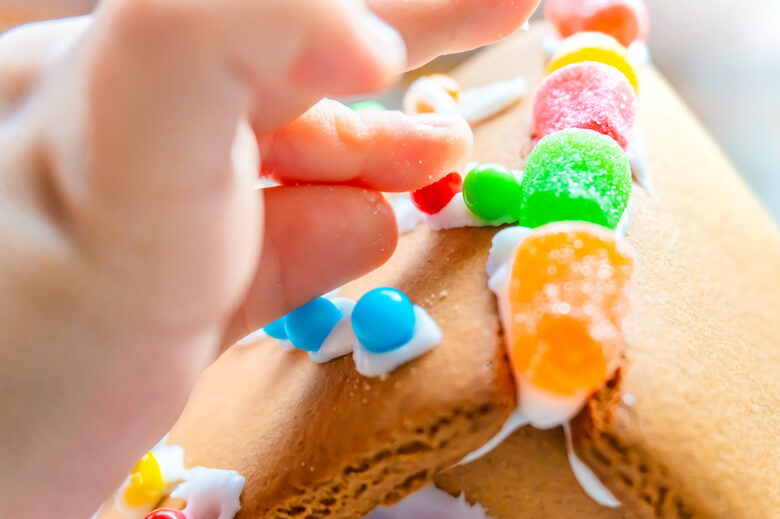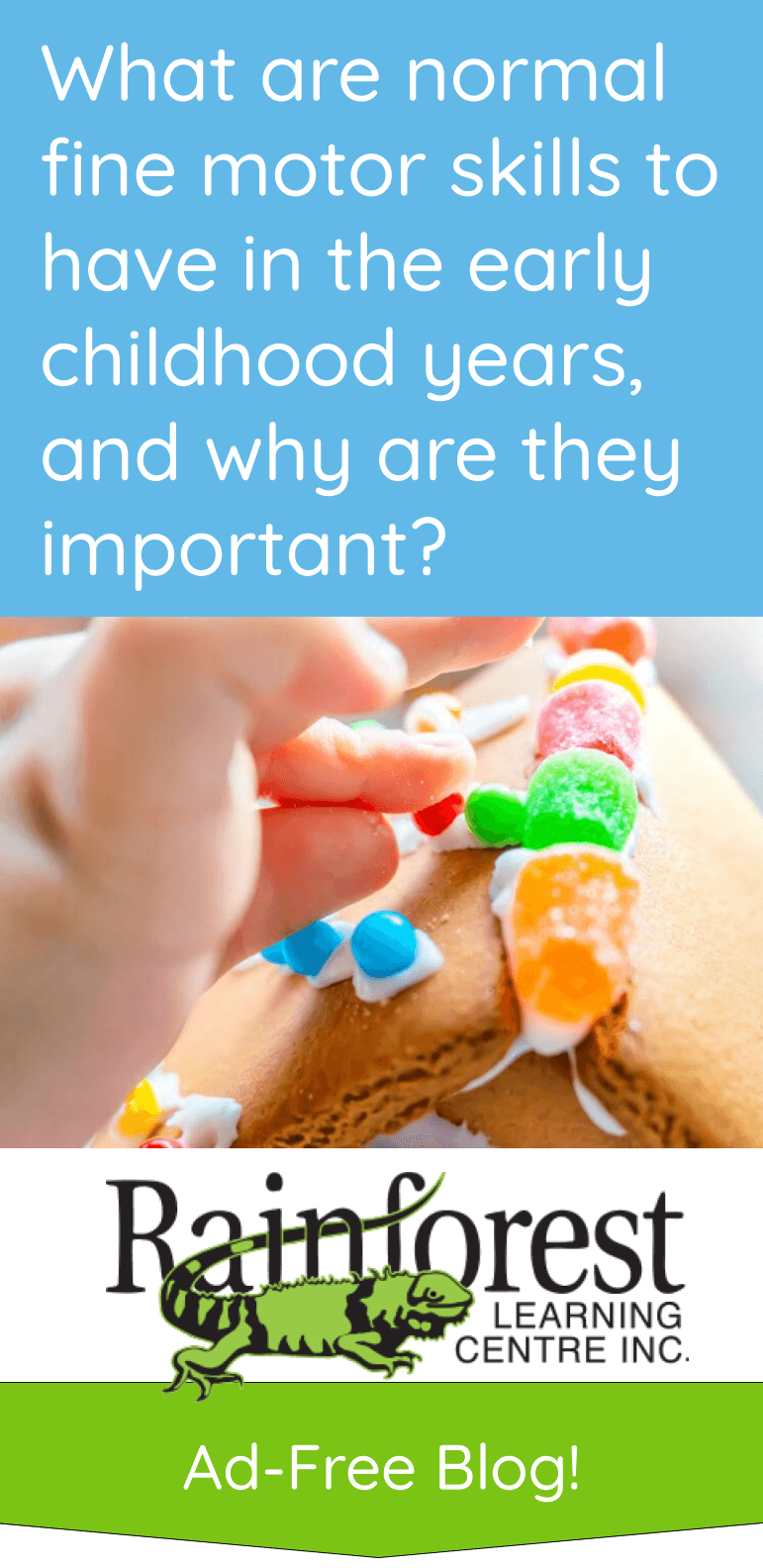
In our article about gross motor skills development in early childhood, we discussed the importance of developing bodily movements and abilities. Our physical abilities are often a sign of what is going on cognitively, too. And, normal growth means that we develop new skills in multiple areas. Gross motor skills involve the ‘large’ movements of our body, such as lifting or jumping. Kids should be able to skip and hop by age 5, for instance. But what are normal fine motor skills to have in early childhood? These refer to the tasks we do with smaller parts of our body – usually our fingers.
In this article, we’ll explain what preschoolers should be able to do at certain ages, when it comes to fine motor skills development. We’ll also explain why these bodily skills are so important.
What fine motor skills should a child have by preschool age?
Fine motor skills in early childhood refers to the use of small muscles, which can include all of the following parts of the body:
- Wrist
- Hands
- Fingers
- Feet
- Toes
However, when encouraging the use of fine motor skills, early childhood educators and child development experts are mostly concerned with what our hands can do. How well we coordinate our eyes with our hand movements, as well as the stability of our hands and fingers to do certain tasks, can culminate in good or poor fine motor skills. The professional terms for these include:
- Grasping and palmar grasp (gripping with the whole hand, usually starting as a baby – this starts for just a few seconds, and develops into a longer hold)
- Raking grasp (using the whole hand, curled inward, to gather materials towards oneself)
- Inferior pincer grasp (using the forearm and wrist to stabilize the forefinger and thumb to pick things up)
- Superior (neat) pincer grasp (using the forefinger and thumb to pick up small objects without needing the stability of the forearm)
- Pencil grasp (ability to hold a pencil properly, and to write by controlling the hand)
- Scissor skills (using scissors without help)
- Bilateral hand skills (using both hands at the same time)
- Muscle memory (repeating common tasks without needing to think twice about it)
- Hand-eye coordination (being able to control hand movements while looking at what one is doing, for guidance and precision)
While all children develop differently, the general guidelines for what a child should be able to do with their hands and feet by preschool age are as follows:
- Pick up a pencil or crayon and draw something
- Begin writing skills by copying letters or shapes, or tracing over them
- Brush their teeth
- Washes hands and wipes them dry
- Pours liquid intentionally, or carries it from one place to another (such as with a bucket at the beach)
- Put magnetic train pieces together and push forward on a toy train track
- Build a tower with multiple blocks or pieces
- Use Lego blocks
- Use a fork and spoon to feed themselves
- Turn knobs and door handles
- Ride a tricycle or scooter (though this can depend on how much exposure they’re given to this task), after learning with a glider (if they have one)
- Holds and animates a puppet
- Use a hole punch
- Use stamps
- Cut paper with child-safe scissors
- Use their index finger to intentionally draw recognizable shapes in the sand, or on a tablet drawing program (e.g. the sun, a circle, the grass, a flower or a ‘road’)
- Puts plastic lids on containers, and takes them off, including the twist kind
- Thread beads
- Make shapes with playdough, like a ‘snake,’ ball or circle, including with playdough tools
- Fit large-sized puzzle pieces into their shape spaces
- Pull and zip up zippers
- Use velcro straps to take off and put on shoes
- Button and unbutton clothes
- Hold a juice box and use a straw without squeezing out the juice
- Drink from a cup by holding it themselves
- Catch a ball with two hands
Why are fine motor skill milestones important in children?
Fine motor skills have a lot to do with a child’s education as they grow. Imagine going through school without being able to hold a pencil firmly enough to draw coherent letters or numbers. Or continuously dropping things. Or having a hard time using scissors. These are essential skills that a child will need to live a normal life.
Overall, fine motor skills help us in our daily life, even as adults. Imagine if we couldn’t type on a computer, or tap our phones in the right place. We’d all be lost! But even without technology, we need our hand functions for many fundamental responsibilities; washing up, eating, dressing – it all uses the muscles in our hands and wrists. We barely think about these things, due to muscle memory. But they are crucial.
Improper development of fine motor skills can be indicative of other issues. These muscle movements are connected to brain function. So, if your child is severely behind, special attention may be needed to address these issues. For example, they may have developmental coordination disorder (DCD), dyspraxia or dysgraphia (an inability to write properly). Perhaps your child will need an occupational therapist to help. Though, there can be other root causes to the symptoms of being unable to control fine motor activity.
If you are concerned your child may have learning disability related to fine motor skills, we encourage you to see your family doctor. This article is not meant to be a diagnostic tool, but an educational one, to keep parents aware of what to look out for.
How can I help my child develop strong fine motor skills?
Just like developing gross motor skills, children need lots of practice to develop their fine motor skills. In fact, practice may be more crucial for these tasks, as they require more precision, with smaller parts, than with the larger muscles used for walking, running or balancing.
Ideas to help a child develop fine motor skills include:
- Encouraging them to flip the pages of a book themselves, during story time.
- Doing crafts that involve small pieces, such as beading, or placing small pieces of candy on a gingerbread house to stick with icing (this may take a few tries until they get it).
- Play with puzzle pieces, or board games that involve smaller pieces that need to be placed on specific spots.
- Use play dough to form shapes.
- Asking them to brush their own teeth (adults can do the ‘final touch’ after the child has had their chance at it).
- Being patient by waiting for them to put on their own shoes, button their shirts and zip up their jackets.
- Ask them to set the table, putting the fork and spoon and plate in the right place.
- Let them feed themselves with a fork and spoon.
- Starting literacy early, including with writing and drawing activities.
- Use finger paint, or draw in coloured sand a tray, or use shaving cream.
- Try holding bubbles in the bubble bath, or blowing bubbles in a bottle, while holding the wand close to their mouth to blow.
- Spending time in nature to notice the little things; pick up small rocks, leaves or sticks to practice the pincer grip. Play in sand or gravel pits by using hands to ‘rake’ and pat down a castle or shape.
- Pop the air pockets in bubble wrap.
- Play Jenga or build towers with attaching blocks.
- Flick marbles and jacks.
- Bowl with plastic pins and a ball.
- Learn a musical instrument.
Normal fine motor skills development in early childhood may need to be monitored and developed over time
Fine motor skills in early childhood are usually second nature. Most parents barely notice that their children are picking up new habits, because they are so common. It is more likely that if your child is unable to grasp objects for very long, or can’t seem to control their hand movements, you’ll notice this right away. The abnormal will be evident far more than the normal.
However, if you’re worried that your four-year-old can’t yet hold a pencil, put a puzzle together or use a scooter, don’t be. Some of these skills come down to practice, as mentioned above. If a scooter or pencil is new to them, it is completely normal that it will take a while – even months – for them to get the hang of it. If they don’t ‘get’ the simplest of matching puzzles, we’d say to watch out for other cognitive skills, in case the problem is not with fine motor skills, but with something else. But it could just not be their cup of tea. There is a difference between not wanting to do it, and not being able to do it.
Whether or not your child is developing normal fine motor skills will be up to a doctor to determine. If you do see a severe shortage in this area of development, we’d encourage you to see a specialist as soon as possible. With these things, early intervention can be key.
See related on our blog:
- What is normal gross motor development in early childhood, and why is it important?
- What is cognitive development in early childhood?
- What are cognitive developmental milestones in early childhood?
- Why sensory development skills are important at daycare
- Does your child need an occupational therapist? Here is what to know
